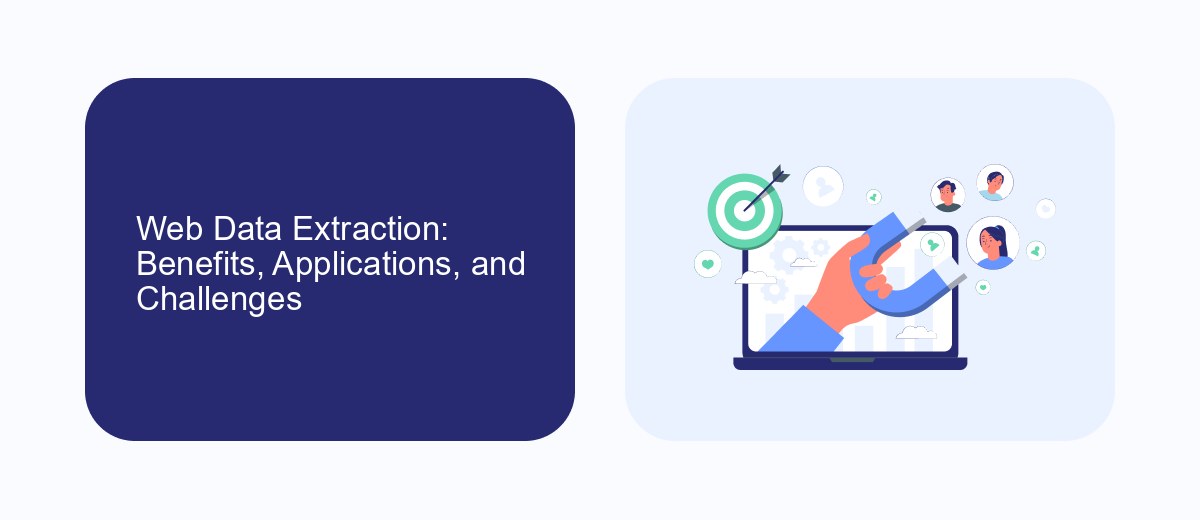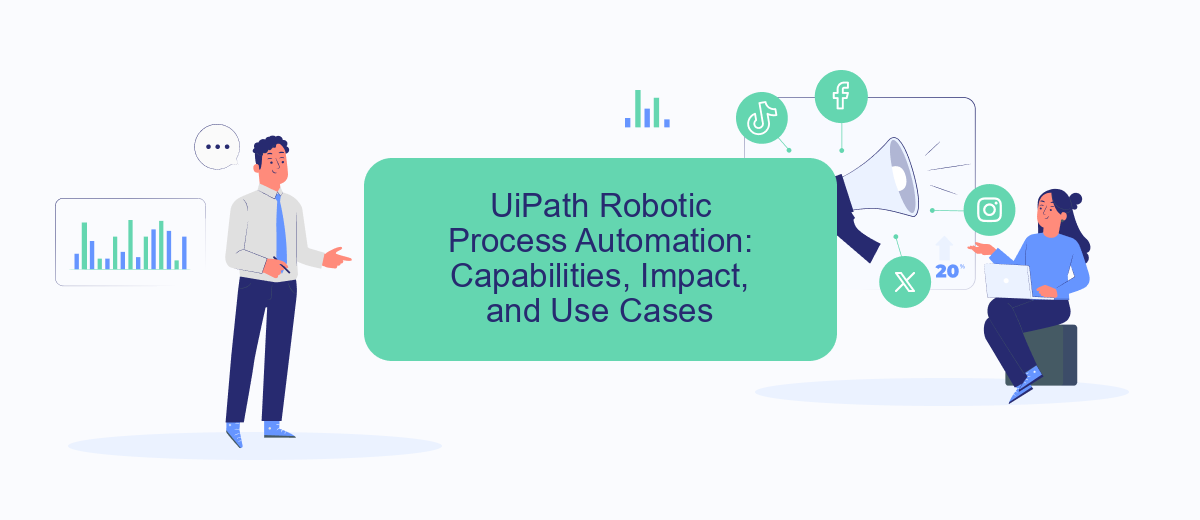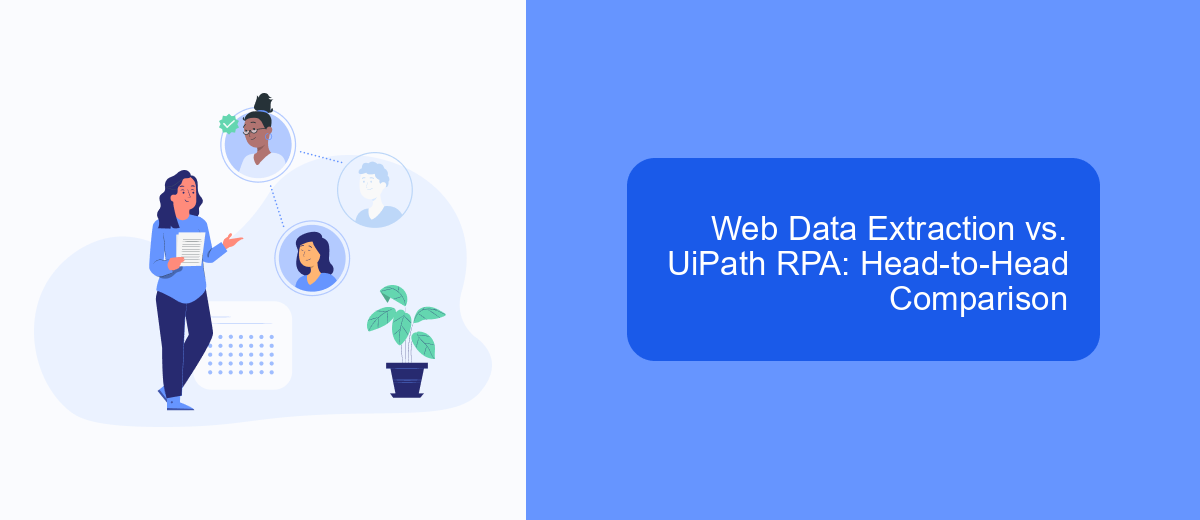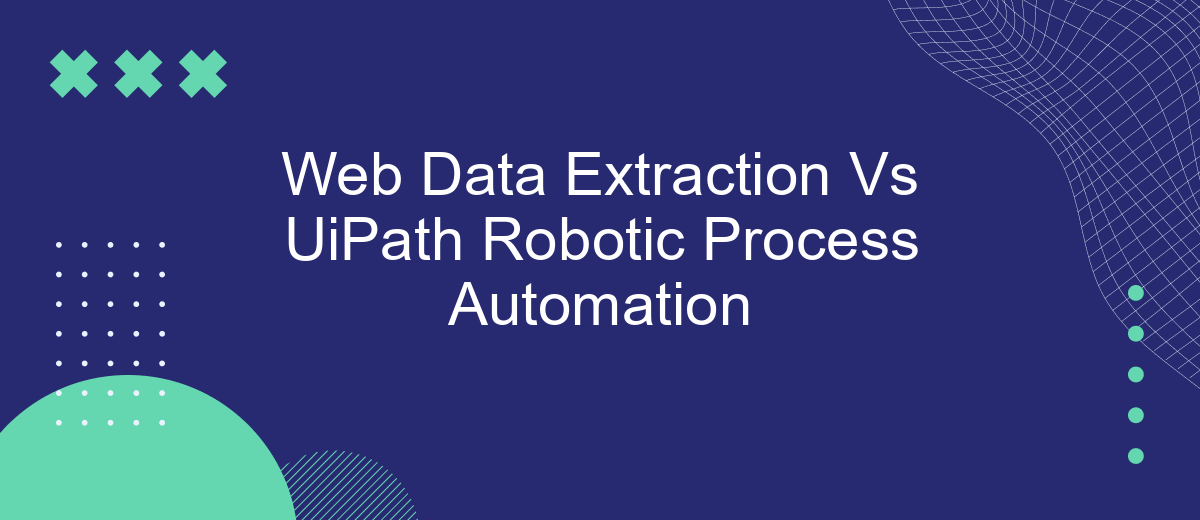In today's data-driven world, businesses are increasingly turning to automation to streamline operations and enhance efficiency. This article delves into the comparison between Web Data Extraction and UiPath Robotic Process Automation (RPA), two powerful tools that serve distinct yet complementary roles. By understanding their unique capabilities and applications, organizations can make informed decisions to optimize their workflows and achieve greater productivity.
Introduction
In today's digital age, businesses are constantly seeking ways to streamline operations and enhance efficiency. Web data extraction and UiPath Robotic Process Automation (RPA) are two powerful technologies that have emerged to meet these needs. Web data extraction involves collecting data from websites and transforming it into a structured format, while UiPath RPA focuses on automating repetitive tasks through software robots.
- Web data extraction: Collects and structures data from websites.
- UiPath RPA: Automates repetitive tasks using software robots.
- SaveMyLeads: Facilitates seamless integration of data between platforms.
Both technologies offer unique benefits and can be integrated to maximize efficiency. For instance, SaveMyLeads is a service that helps businesses set up integrations between various platforms, ensuring smooth data flow and automation. Understanding the differences and synergies between web data extraction and UiPath RPA can help organizations choose the right tools to optimize their processes.
Web Data Extraction: Benefits, Applications, and Challenges

Web data extraction offers numerous benefits, including the ability to collect vast amounts of data from various online sources quickly and efficiently. This process helps businesses gain insights into market trends, customer preferences, and competitive analysis, thereby informing strategic decisions. Additionally, web data extraction can automate repetitive tasks, freeing up valuable time for employees to focus on more critical activities. Tools like SaveMyLeads can further streamline this process by integrating data extraction workflows with other business applications, enhancing overall productivity.
Applications of web data extraction are diverse, ranging from e-commerce price monitoring and sentiment analysis in social media to lead generation and academic research. However, this technology also presents challenges, such as dealing with dynamic websites, handling large volumes of data, and ensuring compliance with legal and ethical standards. Solutions like SaveMyLeads can address some of these challenges by providing robust integration capabilities and automating data flow, simplifying the extraction process while maintaining data integrity and compliance.
UiPath Robotic Process Automation: Capabilities, Impact, and Use Cases

UiPath Robotic Process Automation (RPA) is a powerful tool designed to automate repetitive and rule-based tasks, thereby enhancing operational efficiency and reducing human error. By leveraging advanced technologies like artificial intelligence and machine learning, UiPath RPA can streamline business processes across various industries, making it a versatile solution for modern enterprises.
- Automated Data Entry: UiPath RPA can handle large volumes of data entry tasks, ensuring accuracy and speed.
- Workflow Automation: It enables the automation of complex workflows, reducing the need for manual intervention.
- Integration Capabilities: UiPath can integrate with various third-party applications and services, such as SaveMyLeads, to automate lead management and data synchronization.
- Report Generation: The tool can automatically generate and distribute reports based on predefined criteria, saving time and effort.
- Customer Service Automation: UiPath can automate customer service tasks, such as responding to queries and processing requests, enhancing customer satisfaction.
The impact of UiPath RPA is significant, as it not only reduces operational costs but also allows employees to focus on more strategic tasks. By automating mundane processes, businesses can achieve higher productivity and better resource allocation. Use cases span across industries, including finance, healthcare, retail, and manufacturing, demonstrating the versatility and effectiveness of UiPath RPA in driving digital transformation.
Web Data Extraction vs. UiPath RPA: Head-to-Head Comparison

Web data extraction and UiPath Robotic Process Automation (RPA) are two powerful tools used for automating tasks, but they serve different purposes and have unique strengths. Web data extraction focuses primarily on retrieving data from websites, making it ideal for data analysis, research, and business intelligence. On the other hand, UiPath RPA is designed to automate repetitive tasks across various applications, enhancing productivity and operational efficiency.
When comparing these two technologies, several key differences emerge. Web data extraction tools are generally specialized and optimized for scraping web content, while UiPath RPA offers a more comprehensive automation solution that can interact with multiple systems and applications.
- Scope: Web data extraction is limited to web content, whereas UiPath RPA can automate tasks across various platforms.
- Complexity: Web data extraction tools are simpler to set up but less versatile compared to UiPath RPA.
- Integration: UiPath RPA integrates seamlessly with numerous applications, and services like SaveMyLeads can further streamline these integrations.
Ultimately, the choice between web data extraction and UiPath RPA depends on the specific needs of your project. If your goal is to gather and analyze web data, web data extraction tools are the way to go. However, for broader automation needs, UiPath RPA offers a more robust and flexible solution.
Conclusion: Choosing the Right Solution for Your Business Needs
When deciding between Web Data Extraction and UiPath Robotic Process Automation (RPA) for your business needs, it's crucial to consider the specific requirements and goals of your organization. Web Data Extraction is ideal for businesses that need to gather and analyze vast amounts of data from various online sources efficiently. This method is particularly beneficial for market research, competitive analysis, and data-driven decision-making. On the other hand, UiPath RPA offers a comprehensive automation solution that can streamline repetitive tasks, improve operational efficiency, and reduce human error across different departments.
For businesses looking to integrate multiple services seamlessly, tools like SaveMyLeads can be instrumental. SaveMyLeads automates the process of connecting different applications, ensuring that data flows smoothly between them without manual intervention. This integration capability can enhance the effectiveness of both Web Data Extraction and UiPath RPA by ensuring that the extracted data and automated processes are utilized to their fullest potential. Ultimately, the right choice depends on your specific business needs, but leveraging integration tools can provide a more cohesive and efficient solution.
- Automate the work with leads from the Facebook advertising account
- Empower with integrations and instant transfer of leads
- Don't spend money on developers or integrators
- Save time by automating routine tasks
FAQ
What is Web Data Extraction?
What is UiPath Robotic Process Automation (RPA)?
How do Web Data Extraction and RPA differ in terms of use cases?
Can Web Data Extraction and RPA be integrated?
What services can help with the integration of Web Data Extraction and RPA?
Personalized responses to new clients from Facebook/Instagram. Receiving data on new orders in real time. Prompt delivery of information to all employees who are involved in lead processing. All this can be done automatically. With the SaveMyLeads service, you will be able to easily create integrations for Facebook Lead Ads and implement automation. Set up the integration once and let it do the chores every day.

